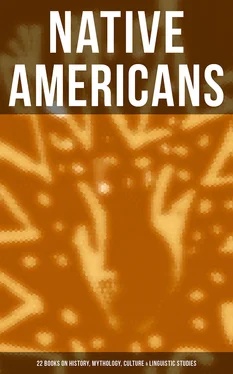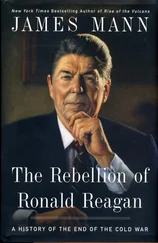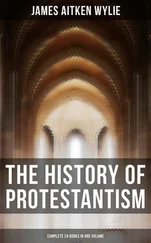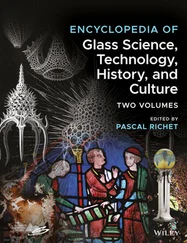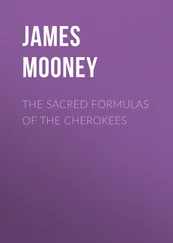Psychotheism is born of physitheism as the anthropomorphic element in the concept of natural agency gradually fades; but since none of the aborigines of the United States had passed into the higher stage, the mode of transition does not require consideration.
It is to be borne in mind that throughout the course of development of belief, from the beginning of hecastotheism into the borderland of psychotheism, the dominant characteristic is the vague notion of mystery. At first the mystery pervades all things and extends in all directions, representing an indefinite ideal world, which is the counterpart of the real world with the addition of human qualities. Gradually the mystery segregates, deepening with respect to animals and disappearing with respect to inanimate things; and at length the slowly changing mysteries shape themselves into semiabstractions having a strong anthropic cast, while the remainder of the earth and the things thereof gradually become real, though they remain under the spell and dominion of the mysterious. Thus at every stage the primitive believer is a mystic—a fatalist in one stage, a beast worshiper in another, a thaumaturgist in a third, yet ever and first of all a mystic. It is also to be borne in mind (and the more firmly because of a widespread misapprehension) that the primitive believer, up to the highest stage attained by the North American Indian, is not a psychotheist, much less a monotheist. His "Great Spirit" is simply a great mystery, perhaps vaguely anthropomorphic, oftener zoomorphic, yet not a spirit, which he is unable to conceive save by reflection of the white man's concept and inquiry; and his departed spirit is but a shade, much like that of the ancient Greeks, the associate and often the inferior of animal shades.
While the four stages in development of belief are fundamentally distinct, they nevertheless overlap in such manner as apparently, and in a measure really, to coexist and blend. Culture progress is slow. In biotic development the effect of beneficial modification is felt immediately, and the modified organs or organisms are stimulated and strengthened cumulatively, while the unmodified are enfeebled and paralyzed cumulatively through inactivity and quickly pass toward atrophy and extinction. Conversely in demotic development, which is characterized by the persistence of the organisms and by the elimination of the bad and the preservation of the good among qualities only, there is a constant tendency toward retardation of progress; for in savagery and barbarism as in civilization, age commonly produces conservatism, and at the same time brings responsibility for the conduct of old and young, so that modification, howsoever beneficial, is measurably held in check, and so that the progress of each generation buds in the springtime of youth yet is not permitted to fruit until the winter of old age approaches. Accordingly the mean of demotic progress tends to lag far behind its foremost advances, and modes of action and especially of thought change slowly. This is especially true of beliefs, which, during each generation, are largely vestigial. So the stages in the evolution of mythologic philosophy overlap widely; there is probably no tribe now living among whom zootheism has not yet taken root, though hecastotheism has been found dominant among different tribes; there is probably no people in the zootheistic stage who are completely divested of hecastotheistic vestiges; and one of the curious features of even the most advanced psychotheism is the occasional outcropping of features inherited from all of the earlier stages. Yet it is none the less important to discriminate the stages.
It was partly through pioneer study of the Siouan Indians that the popular fallacy concerning the aboriginal "Great Spirit" gained currency; and it was partly through the work of Dorsey among the ¢egiha and Dakota tribes, first as a missionary and afterward as a linguist, that the early error was corrected. Among these tribes the creation and control of the world and the things thereof are ascribed to "wa-kan-da" (the term varying somewhat from tribe to tribe), just as among the Algonquian tribes omnipotence was assigned to "ma-ni-do" ("Manito the Mighty" of "Hiawatha"); yet inquiry shows that wakanda assumes various forms, and is rather a quality than a definite entity. Thus, among many of the tribes the sun is wakanda—not the wakanda or a wakanda, but simply wakanda; and among the same tribes the moon is wakanda, and so is thunder, lightning, the stars, the winds, the cedar, and various other things; even a man, especially a shaman, might be wakanda or a wakanda. In addition the term was applied to mythic monsters of the earth, air, and waters; according to some of the sages the ground or earth, the mythic under-world, the ideal upper-world, darkness, etc, were wakanda or wakandas. So, too, the fetiches and the ceremonial objects and decorations were wakanda among different tribes. Among some of the groups various animals and other trees besides the specially wakanda cedar were regarded as wakandas; as already noted, the horse, among the prairie tribes, was the wakanda dog. In like manner many natural objects and places of striking character were considered wakanda. Thus the term was applied to all sorts of entities and ideas, and was used (with or without inflectional variations) indiscriminately as substantive and adjective, and with slight modification as verb and adverb. Manifestly a term so protean is not susceptible of translation into the more highly differentiated language of civilization. Manifestly, too, the idea expressed by the term is indefinite, and can not justly be rendered into "spirit," much less into "Great Spirit;" though it is easy to understand stand how the superficial inquirer, dominated by definite spiritual concept, handicapped by unfamiliarity with the Indian tongue, misled by ignorance of the vague prescriptorial ideation, and perhaps deceived by crafty native informants or mischievous interpreters, came to adopt and perpetuate the erroneous interpretation. The term may be translated into "mystery" perhaps more satisfactorily than into any other single English word, yet this rendering is at the same time much too limited and much too definite. As used by the Siouan Indian, wakanda vaguely connotes also "power," "sacred," "ancient," "grandeur," "animate," "immortal," and other words, yet does not express with any degree of fullness and clearness the ideas conveyed by these terms singly or collectively—indeed, no English sentence of reasonable length can do justice to the aboriginal idea expressed by the term wakanda.
While the beliefs of many of the Siouan tribes are lost through the extinction of the tribesmen or transformed through acculturation, it is fortunate that a large body of information concerning the myths and ceremonials of several prairie tribes has been collected. The records of Carver, Lewis and Clark, Say, Catlin, and Prince Maximilian are of great value when interpreted in the light of modern knowledge. More recent researches by Miss Fletcher49 and by Dorsey50 are of especial value, not only as direct sources of information but as a means of interpreting the earlier writings. From these records it appears that, in so far as they grasped the theistic concept, the Siouan Indians were polytheists; that their mysteries or deities varied in rank and power; that some were good but more were bad, while others combined bad and good attributes; that they assumed various forms, actual and imaginary; and that their dispositions and motives resembled those found among mankind.
The organization of the vague Siouan thearchy appears to have varied from group to group. Among all of the tribes whose beliefs are known, the sun was an important wakanda, perhaps the leading one potentially, though usually of less immediate consideration than certain others, such as thunder, lightning, and the cedar tree; among the Osage the sun was invoked as "grandfather," and among various tribes there were sun ceremonials, some of which are still maintained; among the Omaha and Ponka, according to Miss Fletcher, the mythic thunder-bird plays a prominent, perhaps dominant rôle, and the cedar tree or pole is deified as its tangible representative. The moon was wakanda among the Osage and the stars among the Omaha and Ponka, yet they seem to have occupied subordinate positions; the winds and the four quarters were apparently given higher rank; and, in individual cases, the mythic water-monsters or earth-deities seem to have occupied leading positions. On the whole, it may be safe to consider the sun as the Siouan arch-mystery, with the mythic thunder-bird or family of thunder-birds as a sort of mediate link between the mysteries and men, possessing less power but displaying more activity in human affairs than the remoter wakanda of the heavens. Under these controlling wakandas, other members of the series were vaguely and variably arranged. Somewhere in the lower ranks, sacred animals—especially sports, such as the white buffalo cow—were placed, and still lower came totems and shamans, which, according to Dorsey, were reverenced rather than worshiped. It is noteworthy that this thearchic arrangement corresponded in many respects with the hierarchic social organization of the stock.
Читать дальше
